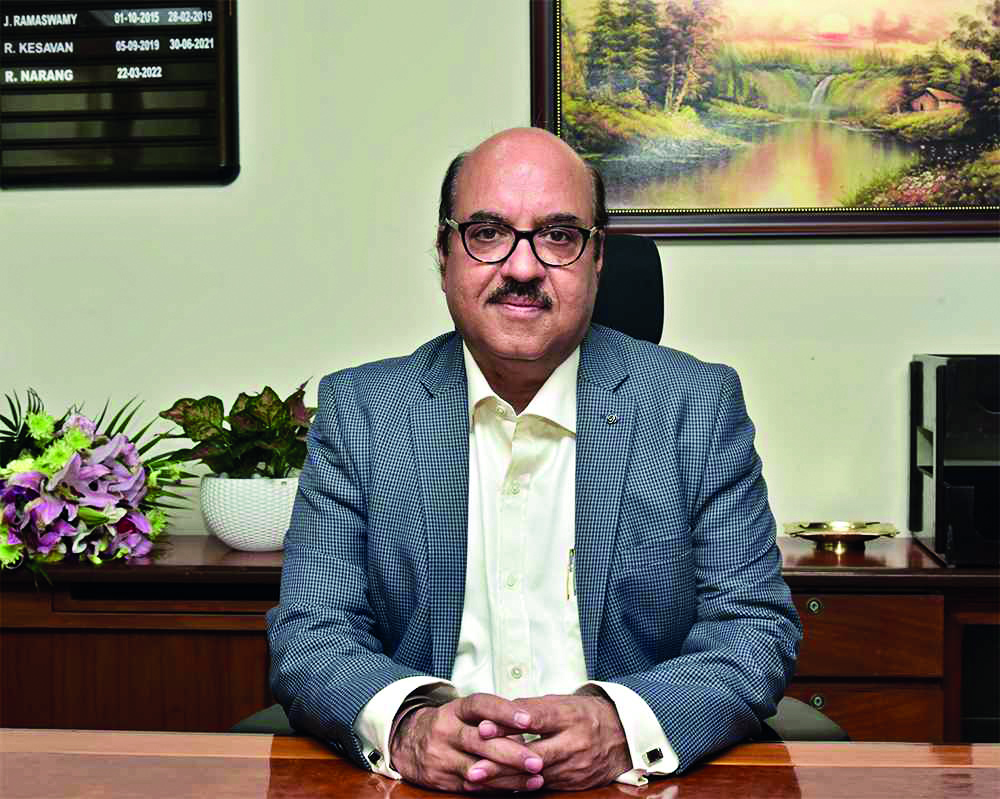HPCL charts aggressive growth: Expanding refineries, investing in LNG & renewables for India’s energy future
One aspect of LNG expansion includes capacity booking for the company’s re-gasification facility, says Narang

New Delhi: Rajneesh Narang, who currently holds the additional charge of Chairman & Managing Director (C&MD) at Hindustan Petroleum Corporation Ltd (HPCL), shares key insights into the company’s strategic expansion plans, investment in LNG and refining capacities, and its aggressive push into renewable energy while talking to the Millennium Post exclusively.
Narang provides a comprehensive overview of how the company is shaping India’s energy future, from the commissioning of HPCL’s new regasification facility in Gujarat to the latest updates on the Vizag and Barmer refinery projects.
He also highlights HPCL’s commitment to sustainability, outlining ambitious plans for renewable energy expansion and green hydrogen adoption. Here’s an in-depth look at HPCL’s roadmap and vision for the years ahead.
HPCL has signed multiple MoUs, including in the LNG space. Could you elaborate on these developments?
Certainly, we recently commissioned our 5 million metric ton re-gasification facility in Gujarat. This marks a significant step in our gas business expansion.
While we have been procuring domestic gas, this facility allows us to bring in our gas, enabling long-term sourcing arrangements with multiple partners.
Ensuring gas availability will help HPCL be more competitive in the market, instilling confidence among customers regarding our ability to meet their requirements.Additionally, one aspect of our LNG expansion includes capacity booking for our re-gasification facility. Another key aspect is gas trading.
We have signed a MoU with the Indian Gas Exchange (IGX), which allows HPCL and other interested parties to buy gas at the Chhara terminal. This move increases flexibility for potential customers, giving them multiple sourcing options, either directly through HPCL or via other market mechanisms.
Could you provide an update on HPCL’s Vizag expansion plan?
The Vizag expansion was undertaken with three primary objectives. First, the production of BS-VI-compliant fuels was completed in March 2020. Second, the expansion of refinery capacity from 8.3 million metric tons to 15 million metric tons, was completed in March 2023.
Third, the commissioning of a Bottoms Upgradation Facility using LC-Max technology is scheduled for March 2025.
LC-Max is a pioneering technology in India that enables a higher conversion of crude into valuable distillates—up to 93 per cent. This will significantly improve our yields while adding approximately $3 per barrel to our Gross Refining Margins (GRMs).
In addition to the Vizag refinery, we are also progressing with our Barmer refinery in Rajasthan.
This project is about 84 per cent complete, and we plan to commission both the refinery and the associated petrochemical facility within the current year. The refinery will be completed first, followed by the petrochemical unit.
What is the scale of investment in the Vizag and Barmer expansion projects?
The investment in the Vizag expansion project is approximately Rs. 30,000 crore. As for the Barmer refinery, the total project cost is around Rs. 73,000 crore.
Of this, the actual capital expenditure stands at approximately Rs. 52,000- Rs. 53,000 crore. With over 85 per cent of the project already completed, we are on track to meet our commissioning targets.
The government envisions India as a refining hub. How does HPCL plan to enhance its refining capacity?
At present, HPCL sells more fuel than it refines. Once all our expansion projects are operational, our refining capacity will reach nearly 45 million metric tons per annum (MMTPA). This includes 10 MMTPA from our Mumbai refinery, 15 MMTPA from Vizag, 12.5+ MMTPA from our Bhatinda refinery (a joint venture with Mittal Energy), and 9 MMTPA from the Barmer refinery.
Most refineries operate at around 110 per cent of their nameplate capacity, meaning our effective capacity will be close to 50 MMTPA. Further expansion remains a possibility, particularly at Barmer, where pre-investments have been made to scale up to 18 MMTPA if needed.
However, future capacity additions will depend on demand trends and market conditions.
HPCL is expanding its fossil fuel business while also investing in renewable energy. How do you balance both strategies?
The global energy landscape is shifting towards a diversified mix, and HPCL aims to be a key player across all segments—conventional energy, biofuels, and renewables. Our renewable energy portfolio currently stands at over 200 MW, and we plan to double it by the end of this financial year.
By March 2026, we aim to cross 1 GW, and by 2030, our target is 10 GW of renewable capacity. We are deploying solar power across multiple locations, including solar parks, rooftops, and our own facilities such as depots and refineries.
This aligns with our commitment to carbon reduction and sustainability. Additionally, we are exploring hybrid energy solutions and green hydrogen initiatives. Our tender for green hydrogen is already out, and the last date for submission is March 7. We expect a strong response.
How will HPCL scale its renewable energy capacity from 200 MW to 400 MW? Will new locations be developed?
Yes, we are setting up projects at new locations and expanding existing ones. Our renewable energy projects are diversified across solar parks, rooftops, and captive installations at our refineries and depots. A key aspect of our strategy is integrating renewable into our operations, thereby reducing dependency on fossil-fuel-based power.
Green hydrogen is another crucial element of our transition strategy. We are actively participating in the emerging hydrogen economy and are aligned with the national green hydrogen mission. As part of this initiative, we are exploring opportunities for hydrogen production, blending, and consumption within our refineries and across other applications.
Any final thoughts on HPCL’s future roadmap?
HPCL is committed to being a leading energy company with a well-balanced portfolio across refining, marketing, and renewables.
While we continue to enhance our refining and gas capabilities, our focus on renewables and biofuels ensures that we remain future-ready. We will continue evaluating new opportunities to optimize our energy mix and contribute to India’s energy security and sustainability goals.



